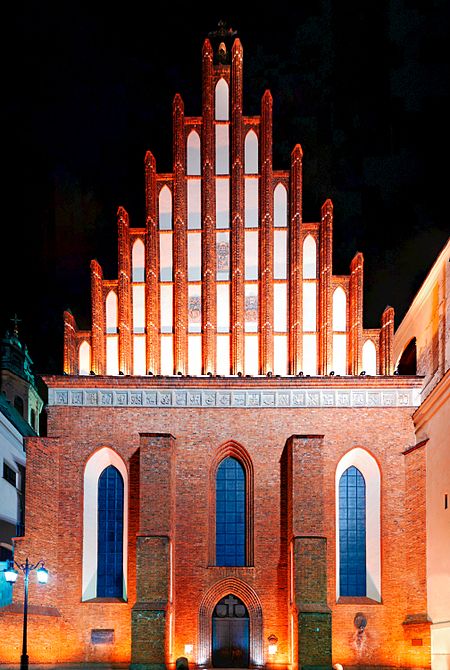St. John's Archcathedral, Warsaw
14th-century Roman Catholic church buildings in Poland20th-century Roman Catholic church buildings in PolandBasilica churches in PolandBurial sites of the Piast dynastyGothic architecture in Poland ... and 3 more
Rebuilt buildings and structures in PolandRoman Catholic cathedrals in PolandRoman Catholic churches in Warsaw

St John's Archcathedral (Polish: Archikatedra św. Jana w Warszawie) is a Roman Catholic church within the Old Town precinct in Warsaw, Poland. The Brick Gothic structure stands on Świętojańska Street, adjacent to the Jesuit Church. St John's is one of three major cathedrals in the city, but it is the only temple that also possesses the title of an archcathedral. It is the mother church of the archdiocese of Warsaw and one of Poland's national pantheons. Along with the old city, the church has been listed by UNESCO as a World Heritage Site.
Excerpt from the Wikipedia article St. John's Archcathedral, Warsaw (License: CC BY-SA 3.0, Authors, Images).St. John's Archcathedral, Warsaw
Świętojańska, Warsaw Śródmieście (Warsaw)
Geographical coordinates (GPS) Address External links Nearby Places Show on map
Geographical coordinates (GPS)
| Latitude | Longitude |
|---|---|
| N 52.248888888889 ° | E 21.013611111111 ° |
Address
Archikatedra pw. Świętego Jana Chrzciciela (Bazylika archikatedralna pw. Świętego Jana Chrzciciela)
Świętojańska 8
00-288 Warsaw, Śródmieście (Warsaw)
Masovian Voivodeship, Poland
Open on Google Maps











